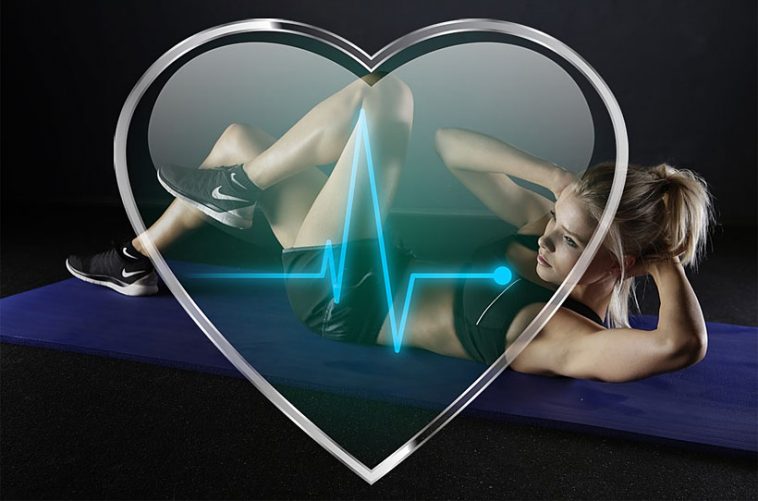- Like
- SHARE
- Digg
- Del
- Tumblr
- VKontakte
- Flattr
- Buffer
- Love This
- Save
- Odnoklassniki
- Meneame
- Blogger
- Amazon
- Yahoo Mail
- Gmail
- AOL
- Newsvine
- HackerNews
- Evernote
- MySpace
- Mail.ru
- Viadeo
- Line
- Comments
- Yummly
- SMS
- Viber
- Telegram
- JOIN
- Skype
- Facebook Messenger
- Kakao
- LiveJournal
- Yammer
- Edgar
- Fintel
- Mix
- Instapaper
- Copy Link
Introduction
In regards to cardiovascular exercise and training, it all depends on your preferences and the goals you want to achieve. Cardio training can be either for overall health & fitness, weight loss or competitive enhancement.
For the purpose of this article, we are going to look into HIIT & LISS cardio and discuss the pros and cons for fat loss and muscle preservation when wanting to get to that shredded sculpted look.
Overall Benefits of Cardio for Muscle Growth and Maintenance
If your cardiovascular health is increased, it gives the ability of the heart, blood cells and lungs to supply oxygen/nutritious rich blood to the working muscles and therefore your muscles to use the oxygen and nutrients to produce energy for movement and recovery. Hypertrophy (muscle growth) comes from the ability of your body & muscle tissue to recover and repair to build more fibres and tissue. Having a strong cardiovascular system will enhance your bodies recovery process inevitably allowing for better recovery and growth, along with the correct training and progressive overload principles in place.
Best Type of Cardio for Maintaining Muscle: HIIT vs LISS
Without doubt, the question of whether HIIT or LISS is best for fat loss and prevention of muscle loss is one of the most debated subject in the fitness & Bodybuilding community. Even to this day it will go back and forth with new studies coming out for either side of the debate. It’s without question that cardio in any form can be great for fat loss, that be it along with the correct diet and training of course.
In any case, too much cardio can hinder the potential of maintaining your muscle and muscle growth. It can even cause muscle Atrophy (muscle loss) Having the lack of calories and protein in your system while on the cardio train will force your body to delve into your own body’s protein source. Your body undergoes various metabolic processes, including the break down of amino acids for energy. This is known as proteolysis and puts your body in a catabolic (muscle breakdown (state. With the process increasing in relation to lack of nutrients and increased cardio duration.
HIIT (High Intensity Interval Training)
HIIT is a great way to burn fat in a short time, maintain muscle mass, improve endurance and cardiovascular health in the correct environment.
It is an idea in which low to moderate intensity intervals are alternated with high intensity intervals.
HIIT can be applied to cardio exercises like running or biking, to resistance exercises such as squatting. HIIT could be considered more effective than LISS cardio due to the higher intensity levels, therefor enabling you to increase both your aerobic and anaerobic endurance while burning more fat per time. Because of the intensity that applies to HIIT, your fast twitch muscles will be at the forefront of the work involved thus creating more of a demand for powerful muscle mass to allow for performance. It is known to have similarities and resembles the demand of resistance training and as such may help promote similar adaptive processes in regards to muscle mass and retention.
There is an ever so growing popularity of HIIT amongst the physique and bodybuilding community. Many competitors are moving away from the long burdensome cardio sessions.
Studies have shown that performing HIIT compared to LISS stimulates metabolic processes that can help burn more calories and increase metabolic rate long after the actual exercise is performed. One thing to note is the potential for overtraining when combining heavy weight training sessions with HIIT cardio. The body needs its recovery, so a strict plan will need to be put in place to allow for rest & recovery when performing weight training sessions in conjunction with HIIT cardio.
Example of HIIT
To perform HIIT on the bike, you would increase the level/resistance and go all out speed for 30 seconds, RPE 10 (Rate of perceived exertion). Followed by lowering the level and slowing the pace right down for 1 minute to bring your heart rate down to around 55% max and at an RPE scale of around 3. You would repeat this for 10-15 minutes depending on your current fitness level and you’re done.
It’s imperative to say before any cardio workout, make sure you perform a 5 minute warm up which consists of a similar exercise you will be performing but at a slower rate. This will ensure your heart rate slowly and steadily rises to get you ready for the task ahead while warming up your muscles to eliminate potential injury.
The RPE scale can used to measure the intensity of your exercise. The scale starts from 1-10, each number corresponds to the intensity of a workout. 1 being very light, up to 10 being maximum effort.
LISS (Low Intensity Steady State)
This style of cardio is a lot less intense, as its name suggests, it is any form of low intensity cardio where you maintain the same pace for a set period of time.
To reek any health benefits from this style of cardio it is suggested you perform at least 25 minutes each session. This can be performed on a bike, treadmill, cross-trainer, stepper etc. You’ll be wanting to work at a pace that is around 4-5 on the RPE scale.
LISS advocates will often will often state the known fact that a greater percentage of stored body is used for energy when performing cardio at lower intensities as opposed to stored glycogen. This doesn’t necessarily mean to say you will burn more fat than HIIT though.
When it comes to burning body fat, fasted cardio has been on the rise for some time now. This is where you perform the cardio at a time of a state of hunger. This will allow then to tap straight into your bodies fat stores without having to burn the energy/food you have just eaten. This could potentially have a detrimental effect of the preservation of muscle mass. To the point at the beginning of the article where I stated the process of proteolysis. This is at its highest when in a fasted state. Reason being, amino acids are having to be broken down to convert to glucose for energy.
To counteract this process, it is best to consume a small pre workout shake that contains 5-10g of BCAAS ideally with 3-4g of leucine to promote protein synthesis and decrease the total breakdown of stored protein within the muscle tissue. All this without drastically effecting the impact of fat loss while performing low intensity cardio.
In any of these situations the opportunity to perform at your optimal is greatly enhanced by the Gym Wear you are wearing. Trying to gruel out a 1 hour jog on the treadmill with thick, stiff joggers and a tight restricting T-shirt is not the one. The attire you are wearing comes in direct correlation with your performance at hand. The last thing you want when training hard / bodybuilding at the gym or wherever it may be is having uncomfortable Gym Wear. Make sure you are dressed to suit the occasion. Allow your body to move freely without restrictions and to keep as cool as you can possible. The training is hard enough, you don’t want an unnecessary discomfort from the clothes you are wearing.
Ending Note
It all comes down to trying out both cardio types, you may prefer one to the other, do what you prefer.
Training is not just about putting yourself through a workout, you need to enjoy what you do to maintain adherence. One of the main reasons for people giving up at the gym is due to the fact they just do not enjoy it.
Therefore it is vital you choose an exercise that suits you, keep pushing forward and don’t give up. Muscle gain and fat loss is not easy in any circumstance so you must be aware of the efforts needed to maintain the level of training and diet required.
There is no magic pill, and no quick, easy way of going about moulding your physique. So mentally prepare the long game and good luck! ??


